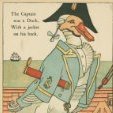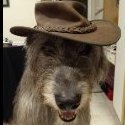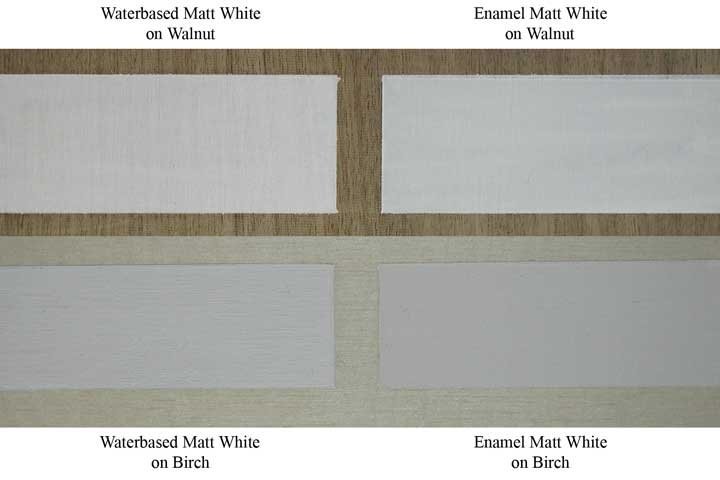-
Posts
136 -
Joined
-
Last visited
About cotrecerf

- Birthday 01/13/1954
Contact Methods
-
MSN
cotrecerf
Profile Information
-
Gender
Male
-
Location
Western Wood/Germany
-
Interests
ship modelling from scratch, photography, painting, translating poems, languages, travelling, hiking, sailing,
Recent Profile Visitors
-
 cotrecerf reacted to a post in a topic:
Hoogaars Yacht by TheDuckDetective - Billing Boats - 1:27 scale
cotrecerf reacted to a post in a topic:
Hoogaars Yacht by TheDuckDetective - Billing Boats - 1:27 scale
-
 Scottish Guy reacted to a post in a topic:
Hoogaars Yacht by TheDuckDetective - Billing Boats - 1:27 scale
Scottish Guy reacted to a post in a topic:
Hoogaars Yacht by TheDuckDetective - Billing Boats - 1:27 scale
-
 cotrecerf reacted to a post in a topic:
Hoogaars Yacht by TheDuckDetective - Billing Boats - 1:27 scale
cotrecerf reacted to a post in a topic:
Hoogaars Yacht by TheDuckDetective - Billing Boats - 1:27 scale
-
 TheDuckDetective reacted to a post in a topic:
Hoogaars Yacht by TheDuckDetective - Billing Boats - 1:27 scale
TheDuckDetective reacted to a post in a topic:
Hoogaars Yacht by TheDuckDetective - Billing Boats - 1:27 scale
-
 cotrecerf reacted to a post in a topic:
Lightship ELBE 1 by Mirabell61 - scale 1:87 - launched 1948
cotrecerf reacted to a post in a topic:
Lightship ELBE 1 by Mirabell61 - scale 1:87 - launched 1948
-
 cotrecerf reacted to a post in a topic:
Hoogaars Yacht by TheDuckDetective - Billing Boats - 1:27 scale
cotrecerf reacted to a post in a topic:
Hoogaars Yacht by TheDuckDetective - Billing Boats - 1:27 scale
-
 mtaylor reacted to a post in a topic:
11th century viking crew and freight in 1:25
mtaylor reacted to a post in a topic:
11th century viking crew and freight in 1:25
-
 cotrecerf reacted to a post in a topic:
Lightship ELBE 1 by Mirabell61 - scale 1:87 - launched 1948
cotrecerf reacted to a post in a topic:
Lightship ELBE 1 by Mirabell61 - scale 1:87 - launched 1948
-
 cotrecerf reacted to a post in a topic:
HMS Crocodile 1781 by Pirate adam - 1/48 scale - POF
cotrecerf reacted to a post in a topic:
HMS Crocodile 1781 by Pirate adam - 1/48 scale - POF
-
 cotrecerf reacted to a post in a topic:
HMS EURYALUS by Matiz - FINISHED - scale 1:56
cotrecerf reacted to a post in a topic:
HMS EURYALUS by Matiz - FINISHED - scale 1:56
-
 cotrecerf reacted to a post in a topic:
HMS EURYALUS by Matiz - FINISHED - scale 1:56
cotrecerf reacted to a post in a topic:
HMS EURYALUS by Matiz - FINISHED - scale 1:56
-
 FriedClams reacted to a post in a topic:
Lightship ELBE 1 by Mirabell61 - scale 1:87 - launched 1948
FriedClams reacted to a post in a topic:
Lightship ELBE 1 by Mirabell61 - scale 1:87 - launched 1948
-
 Retired guy reacted to a post in a topic:
Lightship ELBE 1 by Mirabell61 - scale 1:87 - launched 1948
Retired guy reacted to a post in a topic:
Lightship ELBE 1 by Mirabell61 - scale 1:87 - launched 1948
-
 Retired guy reacted to a post in a topic:
Lightship ELBE 1 by Mirabell61 - scale 1:87 - launched 1948
Retired guy reacted to a post in a topic:
Lightship ELBE 1 by Mirabell61 - scale 1:87 - launched 1948
-
 FlyingFish reacted to a post in a topic:
Lightship ELBE 1 by Mirabell61 - scale 1:87 - launched 1948
FlyingFish reacted to a post in a topic:
Lightship ELBE 1 by Mirabell61 - scale 1:87 - launched 1948
-
 FlyingFish reacted to a post in a topic:
Lightship ELBE 1 by Mirabell61 - scale 1:87 - launched 1948
FlyingFish reacted to a post in a topic:
Lightship ELBE 1 by Mirabell61 - scale 1:87 - launched 1948
-
 Canute reacted to a post in a topic:
Lightship ELBE 1 by Mirabell61 - scale 1:87 - launched 1948
Canute reacted to a post in a topic:
Lightship ELBE 1 by Mirabell61 - scale 1:87 - launched 1948
-
 Canute reacted to a post in a topic:
Lightship ELBE 1 by Mirabell61 - scale 1:87 - launched 1948
Canute reacted to a post in a topic:
Lightship ELBE 1 by Mirabell61 - scale 1:87 - launched 1948
-
cotrecerf started following 18th and early 19th Century cutter models , Adding a cheap DRO to a Proxxon XY-table , HMS Crocodile 1781 by Pirate adam - 1/48 scale - POF and 3 others
-
Mirabelle, thnaks for the pics. Interesting combination of anchor gears. I apologize for not having considered that as an expert you did your thorough study of all details of the vessel well before the actual build....kudos again. ;-)) Greeting Joachim
- 119 replies
-
- lightship
- Feuerschiff Elbe 1
-
(and 1 more)
Tagged with:
-
Hey MIrabelle, very nice work on the ship and good looking smushroom anchor. In case you show (part of) the anchor chain, should it have stud links though? best regards and enjoy a sunny weekend in Glinde Joachim
- 119 replies
-
- lightship
- Feuerschiff Elbe 1
-
(and 1 more)
Tagged with:
-
Hello George, I cannot contribute to your question of how the bowsprit was fitted to the stem resp. deck, but the pic here shows the dimensions of the bowsprit and other spars of the Bermuda sloop on plan LVII of af Chapman`s Architectura Navalis Mercatoria of 1763. The scale is given in Swedish, English and French feet. Maybe you are able to find the complete illustrated build log of a Bermuda sloop issued in Ships in Scale, if I remember right. Good luck Greetings
-
Hello Cristiano, I refer to Allyaned's question, whether the hardware on hulls such as rudder pintles horseshoe brackets etc. were painted with white stuff as the hull was. Imho, these metal parts were always installed before the hull was payed with some stuff and nobody took the trouble of e.g. covering the metal parts or working meticulously not to touch the original colour of the parts or applying a layer of black on them later. These ships were fighting ships and nobody would waste time and effort in achieving "showlike" condition on parts below the water line.. Salutazioni Joachim
-
Hello David, I have an ongoing POB scratch building project of the af Chapman English cutter based on af Chapman's plan. There I first cut the bulkheads without any bevel and placed then on their individual position according to plan with one face exactly meeting the line. From the 0 bulkhead the thickness of each bulkhead points forward to the bow resp. backwards to the stem. It is important to colour the true edge of each bulkhead and keep it untouched while sanding down to smooth the hull. Greetings Joachim
-

Keep Brass Shiny
cotrecerf replied to SilversaxMan's topic in Metal Work, Soldering and Metal Fittings
Hello SilversaxMan, to keep brass shiny (after polishing and degreasing) apply ZAPON-lacquer either by spraying or dipping. It is quite thin fluid and so does not build up too heavily. Have a look at Wikipedia: Zaponlack Zaponlacke sind dünnflüssige, transparente Nitrolacke auf der Basis hochviskoser Cellulosenitrate (Kollodiumwolle), die in leicht flüchtigen Lösungsmitteln wie Amylacetat, Ethanol und Ethylacetat gelöst sind. Sie sind meist farblos, können aber auch Farbstoffe enthalten.[1] Sie dienen meist zum Oxidationsschutz (als Schutz gegen Anlaufen) von Metallen wie Messing, Bronze oder Silber. Zaponlacke sind ungeeignet für die Anwendung bei Eisen oder Stahl, da sie keine rostschützende Wirkung haben. Sie dienen daneben als Firnis sowie zum Lackieren von Holz, Glas und Leder. Der Vorgang des Behandelns mit Zaponlack wird zaponieren genannt. Zaponlacke können gesundheitsschädlich wirken und sind meistens leicht entzündlich. Ein ähnliches Produkt ist Nagellack. Sorry, no translation available. greetings and a happy year 2024 to you Joachim -
The white stuff question is troubling me too. Here's a paint and colour recommendation I've just found: JoTiKa Ltd. ~ Admiralty Paints, Matt White. (jotika-ltd.com) Looking at the original ship paintings shown above, I do not go for the yellowish hue of Vallejo RAL 9001 out of the bottle but give it a definite light white cream colour. But as said above, there is no reliable original and it's up to the modeller's eye. Joachim
-
As for the rivetting: I came across the following on youtube in a very informative channel Blondiehacks where she shows the making of a tool for producing uniform rivetting on items of a steam locomotive:
About us
Modelshipworld - Advancing Ship Modeling through Research
SSL Secured
Your security is important for us so this Website is SSL-Secured
NRG Mailing Address
Nautical Research Guild
237 South Lincoln Street
Westmont IL, 60559-1917
Model Ship World ® and the MSW logo are Registered Trademarks, and belong to the Nautical Research Guild (United States Patent and Trademark Office: No. 6,929,264 & No. 6,929,274, registered Dec. 20, 2022)
Helpful Links
About the NRG
If you enjoy building ship models that are historically accurate as well as beautiful, then The Nautical Research Guild (NRG) is just right for you.
The Guild is a non-profit educational organization whose mission is to “Advance Ship Modeling Through Research”. We provide support to our members in their efforts to raise the quality of their model ships.
The Nautical Research Guild has published our world-renowned quarterly magazine, The Nautical Research Journal, since 1955. The pages of the Journal are full of articles by accomplished ship modelers who show you how they create those exquisite details on their models, and by maritime historians who show you the correct details to build. The Journal is available in both print and digital editions. Go to the NRG web site (www.thenrg.org) to download a complimentary digital copy of the Journal. The NRG also publishes plan sets, books and compilations of back issues of the Journal and the former Ships in Scale and Model Ship Builder magazines.







.jpeg.32348638c4ef737fda1dc74e3b0668de.jpeg)

